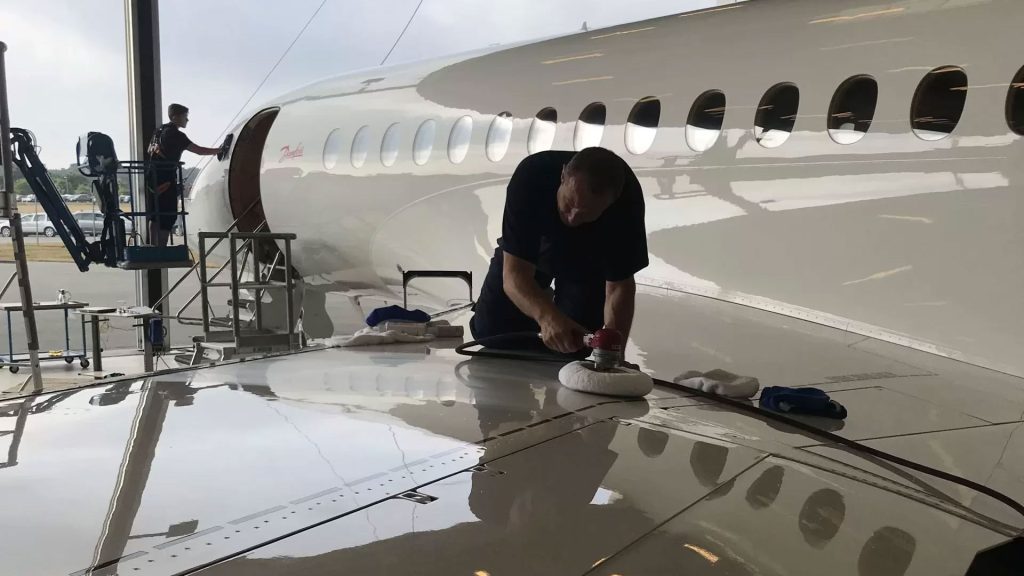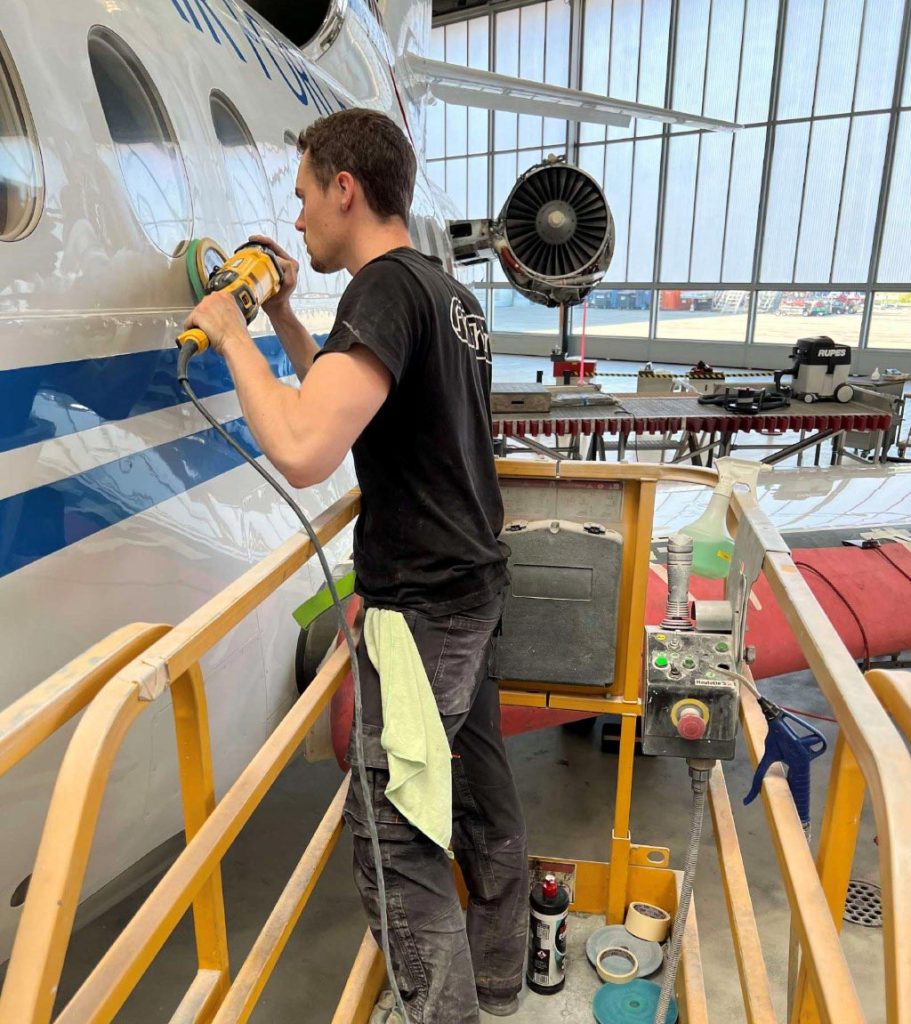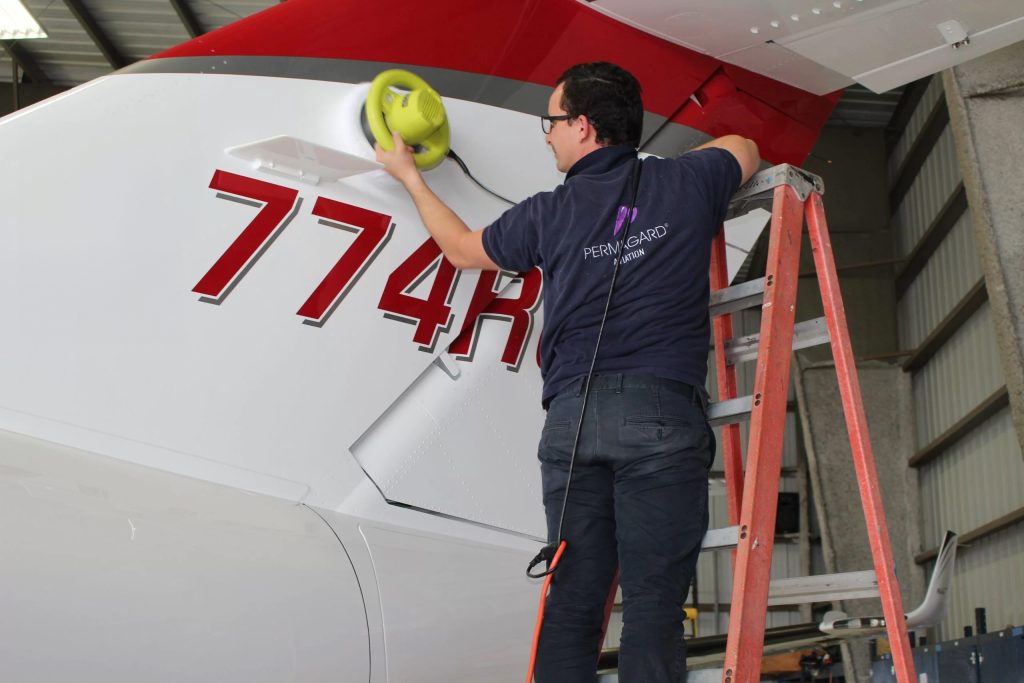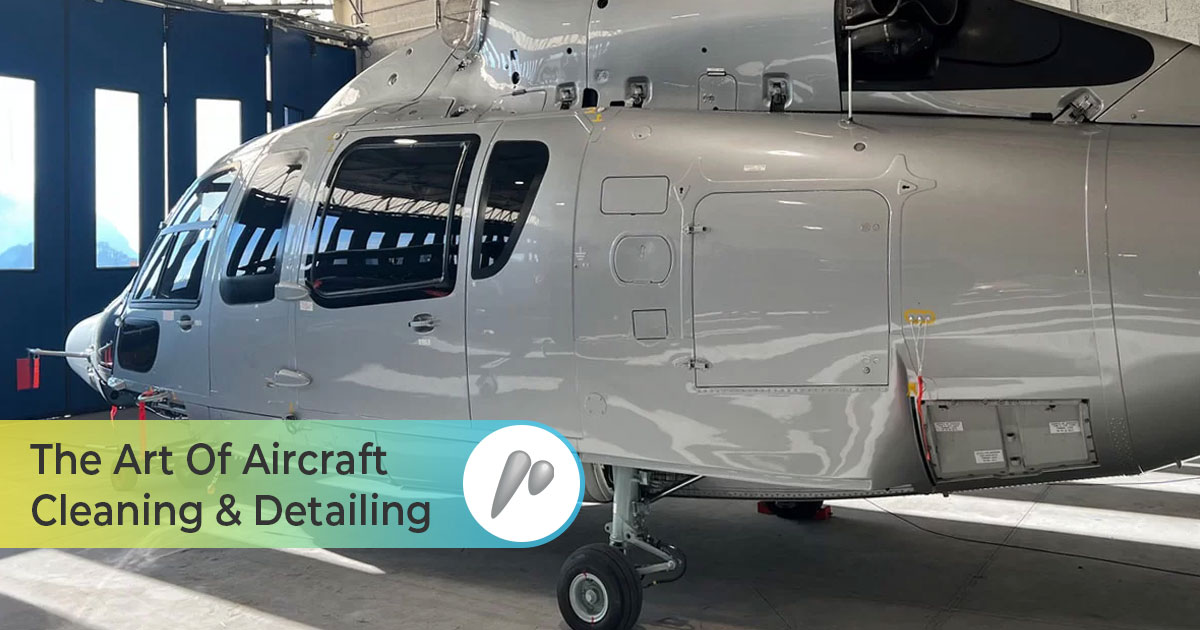The aviation industry is a marvel of engineering and innovation, with aircraft serving as a testament to human ingenuity in conquering the skies. However, beneath the gleaming fuselage and soaring wings lies an often-overlooked aspect of aviation maintenance – aircraft cleaning and detailing. This crucial task not only enhances the aesthetic appeal of aircraft, but also ensures their longevity and performance.
Cleaning and detailing an aircraft is not an easy process. It requires meticulous attention to detail, knowledge of specialized cleaning techniques, and an arsenal of industry-approved products. This may seem overwhelming at first, but do not worry! In this article, we will assist in guiding you through its processes.
What is Aircraft Cleaning and Detailing?
Aircraft cleaning and detailing is the comprehensive process of thoroughly cleaning, polishing, and maintaining the exterior and interior components of an aircraft. It involves removing dirt, grime, grease, and dust particles from both visible surfaces and hard-to-reach areas. It also includes treating windows to ensure clarity for pilots’ visibility during flight operations.

The Importance of Aircraft Cleanliness
Here are a few reasons why aircraft cleaning and detailing is of the utmost importance:
Aerodynamic Efficiency
Any form of dirt, grease, or residue on the aircraft’s exterior disrupts its smooth airflow, leading to increased drag. This can result in reduced fuel efficiency and increased operating costs for the operator. Regularly cleaning and detailing the aircraft helps remove these contaminants, allowing for optimal aerodynamic performance.
Corrosion Prevention
Aircraft are subjected to various environmental elements, such as salt-laden air, pollution, UV radiation, and runway grime. These factors can contribute to corrosion, which weaken the aircraft’s structure. Regular cleaning removes any corrosive agents on the aircraft’s surfaces, preventing long-term damage and ensuring its structural integrity.
Foreign Object Debris (FOD) Prevention
FOD refers to any foreign object or debris that can pose a threat to aircraft safety. This can include loose nuts and bolts, gravel, or even bird strikes. By maintaining a clean aircraft, inspecting for FOD is easier and more thorough.
Operational Efficiency
Aircraft cleaning and detailing contribute to operational efficiency in several ways. For instance, a clean exterior allows for accurate inspection and identification of potential issues or abnormalities. This ensures timely maintenance and minimizes the risk of delays, due to unforeseen mechanical problems. Conversely, the interior of an aircraft must be kept clean to reduce the spread of germs and allergens, thereby ensuring a healthy and comfortable environment for passengers and crew. The visual appearance of the interior is just as important as the exterior during flights, as the owner remains enclosed in the cabin for numerous hours and can easily notice any discrepancies regarding interior detailing.

Aircraft Cleaning Tools and Products
You need the right tools and products to effectively clean and detail an aircraft.
Here are some essential items to include in your aircraft cleaning and detailing kit:
- Microfiber Cloths – These soft and lint-free cloths are perfect for wiping down surfaces without scratching or leaving residue behind. Microfiber cloths are highly absorbent, and ideal for cleaning windows, mirrors, and instrument panels.
- Aircraft-Graded Cleaners – It is essential to use cleaners that are specifically designed for aircraft use. Aircraft-graded cleaners are formulated to remove dirt, grease, and other contaminants without damaging sensitive aircraft surfaces. They are often available in concentrated form, and dilution instructions should be precisely followed.
- Non-Abrasive Cleaning Brushes – Brushes with soft, synthetic bristles are ideal for cleaning aircraft interiors. You can use them to remove dust, dirt, and debris from hard-to-reach areas.
- Extension Poles and Squeegees – In order to access high and hard-to-reach areas of the aircraft’s exterior without the proper equipment, such as a boom lift or a scissor lift, extension poles and squeegees are indispensable. They make it easier to clean and dry hard-to-reach surfaces.
- Aviation-Grade Products – Permagard is an aviation-grade coating that is approved by all major aircraft OEMs. When Permagard is properly applied to an aircraft, it creates a bright gloss and clear shine with a polished and professional finish. Permagard helps to restore and protect the aircraft’s exterior surfaces, providing long-lasting protection against UV radiation, dirt, and grime.
Interior Aircraft Cleaning and Detailing
Cleaning and detailing the interior of an aircraft requires strong attention to detail and thoroughness.
Here are some steps to follow for a comprehensive interior cleaning and detailing:
Clear Out and Organize
Before beginning the cleaning process, it is essential to clear out any personal belongings, trash, or unnecessary items from the plane’s interior. After removing everything, organize the remaining essentials and ensure you stow them away securely.
Vacuuming and Dusting
The next step in interior cleaning is to thoroughly vacuum the aircraft’s interior, including seats, carpets, and floor mats. It requires using a high-powered vacuum cleaner with upholstery and crevice attachments to effectively remove dirt, dust, and debris from all surfaces. When vacuuming and dusting the interior, be thorough and concentrate on hard-to-reach areas such as corners, seat crevices, and underneath seats.
Cleaning the Surfaces and Windows
After vacuuming and dusting the interior, clean all surfaces using an aviation-approved cleaner and microfiber cloths. Start with the cockpit area, including control panels, switches, and displays, being very gentle with all of these electronic components. Do not use a chemical-based cleaner to clean a cockpit’s electronics, unless you are 100% certain it is safe and compatible to use on these surfaces. For seats, use the appropriate cleaner based on the type of material, such as leather, fabric, or synthetic. Follow the manufacturer’s instructions on the label to achieve the best results.
When cleaning windows, it is recommended to use an aviation-grade glass cleaner and a lint-free microfiber cloth. Ideally, spray the glass cleaner onto the microfiber cloth (not directly onto the window) and wipe down the glass in a circular motion, ensuring a streak-free finish. Take extra care to clean and polish the window’s edges and corners, while avoiding using chemicals that can stain rubber stripping or plastic trim.

Exterior Aircraft Cleaning and Detailing
The exterior of an aircraft is constantly exposed to environmental attacks, including dirt, grime, and pollutants. Cleaning and detailing the exterior surfaces properly enhances the beauty of the aircraft, while also protecting the integrity of its surfaces.
Here are some good practices to follow for exterior cleaning and detailing:
Pre-Cleaning Inspection
Before you begin, conduct a thorough exterior inspection of the aircraft. Take note of all exterior defects and damages before touching the aircraft.
Rinsing and Washing
Thoroughly rinse the entire aircraft with water, if doing a wet wash. Wash the exterior surfaces with an aircraft-graded cleaner or detergent mixed with water. Apply the approved cleaner with a soft brush or microfiber sponge, working from top to bottom to reduce streaking and preventing dirt and grime from dirtying clean surfaces.
For dry washes, it is best to use a soft microfiber cloth and an aircraft-graded cleaner that will help minimize streaking during the cleaning process, such as the Permagard Multipurpose Cleaner.
Drying
If you carried out a wet wash on the aircraft, use a clean, soft microfiber cloth or shammy towel to gently dry the exterior. At this stage, concentrate on areas that tend to hold water, such as crevices and around antennas.

DIY vs Professional Aircraft Detailers
While it is certainly possible to clean and detail your own aircraft, there are many advantages to hiring a professional aircraft cleaning and detailing company.
Here are some factors to consider when deciding between a DIY approach or professional aircraft detailing services:
Expertise and Experience
Professional aircraft cleaning and detailing services have the knowledge, experience, and training to handle the intricacies of aircraft cleaning and detailing. They are well-versed in specialized cleaning techniques and have extensive knowledge of aviation-approved products. This ensures that their cleaning processes are thorough and safe for the aircraft’s surfaces.
Time and Efficiency
Cleaning and detailing an aircraft can be a time-consuming task, especially for large aircraft. Professional aircraft cleaning and detailing services have the staffing and efficient processes to complete the job properly and promptly. They can be particularly beneficial for aircraft operators looking to minimize downtime and maximize operational efficiency.
Compliance with Regulations
Professional aircraft cleaning and detailing companies are subject to various regulations and guidelines, especially when it comes to environmental protection and disposal of cleaning products. Professional aircraft detailers are well-versed in these regulations and adhere to them strictly. This ensures compliance in any environment that the aircraft is hangered, and minimizes the risk of any legal or environmental issues.
Schedule Your Permagard Application
With Certified Aircraft Detailers Worldwide
Aircraft cleaning and detailing is a crucial task that requires expertise and knowledge, with access to high-quality, aviation-grade products and equipment. That is why we recommend working with a Permagard-certified detailer. Permagard is the only aviation-grade aircraft paint protection product that provides long-lasting protection against UV radiation, dirt, and grime, while producing an exquisite gloss and shine that cannot be replicated by competitive products. Permagard-certified detailers have undergone specialized training and certification to apply all Permagard Aviation products, ensuring a professional application with optimal results every time. Find a Permagard-certified aircraft detailer near you today to experience the Permagard difference! It’s time to shine and see yourself in your brand!

